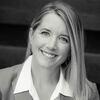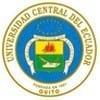Explore all the information on
Poultry biosecurity
Biosecurity is a key management tool and an essential part of any successful poultry production system: it can be defined as the planning and implementation of a set of measures to protect domestic poultry flocks against the introduction of unwanted organisms. Because of the concentration in size and location of poultry flocks in current commercial production operations and the inherent disease risks associated with this type of production, it is imperative that poultry producers practice daily biosecurity measures. Developing and practicing daily biosecurity procedures as best management practices on poultry farms will reduce the possibility of introducing infectious diseases such as Avian Influenza and Exotic Newcastle as well as many others. Contract poultry growers should be familiar with the specifics of their company’s biosecurity protocols and work closely with company representatives to implement those programs.
Suresh Chitturi (Managing Director, Srinivasa Farms) comments on India’s main strengths, consumer trends, and the evolution of poultry operations in the country, during this Engormix interview....
Comments : 0
Recommendations: 3
Grain management, food safety, genetics, biosecurity and bird health will be the featured topics at the 2025 Latin American Poultry Summit. The theme, “Factors Affecting Efficient Poultry Marketing,” will be explored through a robust program featuring technical experts, key...
Comments : 0
Recommendations: 0
Poultry industry experts at the 2025 Latin American Poultry Summit will present information on factors that affect the efficient marketing of poultry farming. The program is organized into five sessions – grain management, food safety, genetics, breeding and health – and will take place on Monday,...
Comments : 0
Recommendations: 0
Avian influenza, caused by influenza A viruses, has emerged as a critical zoonotic threat with implications for both public health and wildlife conservation. This abstract provides an overview of the prevalence, transmission dynamics, and potential impacts of avian influenza in wild birds and mammals within the United States. Drawing on comprehensive surveillance data and scientific studies, we highlight the diverse range of avian influenza strains circulating in wild bird populations and...
Comments : 0
Recommendations: 0
The emergence of highly pathogenic H5N1 avian influenza poses a significant threat to human and animal health worldwide. This summary provides an overview of the surveillance efforts implemented in Peru to combat the spread of H5N1 avian influenza. Joint efforts between the authority, the productive sector, and academia date back to the first influenza outbreak in Chile in 2002. Since then, the government has been developing intense clinical and serological surveillance in the domestic birds...
Comments : 0
Recommendations: 0
Highly pathogenic avian influenza (HPAI) H5N1 viruses continue to pose a significant threat to animal and human health worldwide. Since the onset of the HPAI H5N1 outbreak in South America, our research group has been conducting environmental influenza A virus (IAV) surveillance in different wetlands throughout Chile to detect and characterize circulating IAV strains. Between November 2022 and June 2023, we collected and screened 3275 environmental samples for IAV by RT-qPCR targeting the M...
Comments : 0
Recommendations: 0
The 2022–2023 highly pathogenic avian influenza (HPAI) H5N1 outbreak in the United States (U.S.) is the most geographically extensive and costly animal health event in U.S. history. In 2022 alone, over 57 million commercial and backyard poultry in 47 U.S. states were affected. Over 75% of the affected poultry were part of the commercial table egg production sector. Methods: We conducted a case–control study to identify potential risk factors for the introduction of the HPAI virus...
Comments : 0
Recommendations: 0
The 2022–2023 highly pathogenic avian influenza (HPAI) H5N1 outbreak in the United States (U.S.) is the largest and most costly animal health event in U.S. history. Approximately 70% of commercial farms affected during this outbreak have been turkey farms. We conducted a case-control study to identify potential risk factors for the introduction of the HPAI virus into commercial meat turkey operations. Data were collected from 66 case farms and 59 control farms in 12 states. Univariate...
Comments : 0
Recommendations: 0


Current market review and perspective of Florfenicol, Tilmicocin, vitamins and aminoacids
Suggested link
Highly pathogenic avian influenza virus (HPAIV) H5N1 poses a significant threat to both commercial poultry operations and wild bird populations worldwide. South America, with its rich avian biodiversity and extensive poultry industry, is susceptible to the introduction and spread of this devastating virus. This study explores the imminent challenges and potential outcomes associated with the upcoming bird migration season in South America, focusing on the detection and incidence of HPAIV...
Comments : 0
Recommendations: 0
In Chile, from December 5, 2022, to date (August 30), 892 HPAI H5N1 HPAI-positive samples have been detected in wild birds, affecting 50 species, with 94 zones under control. To date, more than 35,000 wild birds are dead. In addition, 175 positive backyard bird premises have been detected, with more the 14,000 birds culling distributed in the 16 regions of the country in 97 zones under sanitary control. This is the event 4,775 registered in the WAHIS system. In addition, since March 13,...
Comments : 0
Recommendations: 0


Bacillus amyloliquefaciens CECT 5940 (Ecobiol®) alone or in combination with antibiotic growth promoters improve performance in broilers under enteric pathogen challenge
Suggested link
The poultry industry plays a pivotal role in meeting global demands for protein-rich food. However, it faces significant challenges due to emerging infectious diseases, environmental concerns, and ethical considerations surrounding animal welfare. This abstract presents a comprehensive perspective on the integration of biosecurity measures within the framework of One Health, with the aim of enhancing the overall health, welfare, and productivity of commercial poultry operations. The concept...
Comments : 0
Recommendations: 0
Highly Pathogenic Avian Influenza (HPAI), particularly caused by the influenza virus A genus, is a paramount concern for global poultry health. The strains associated with HPAI are known to precipitate mortality rates exceeding 90%. Beyond the immediate and catastrophic impact on poultry, the emergence of HPAI strains disrupts international poultry trade, leading countries to impose trade bans and shake consumer confidence. By September 19th, 2023, Brazil had reported 106 confirmed outbreaks...
Comments : 0
Recommendations: 0
.jpg&w=3840&q=75)

On cherche des distributeurs dans plusieurs pays d’Afrique comme le Kenya, l’Ethiopie, la Tanzanie, le Congo, etc
Suggested link
In the face of escalating global concerns about the occurrence of animal disease outbreaks, effective and sustainable methods for the management of animal mortalities have become a critical component of public health and biosecurity strategies. This abstract presents a comprehensive overview of recent advancements in the field of animal mortality management, with a specific focus on innovative technologies, practices, and policies designed to mitigate the environmental, economic, and health...
Comments : 0
Recommendations: 0
Biosecurity may be defined as protection from pathogens or disease. This may include the separation of the flock from living vectors or inanimate objects called fomites. While prevention of host-specific and zoonotic diseases is important, the commercial poultry industry is already preoccupied with the challenges of day-to-day operations. The purpose of this project was to illustrate how surfaces that may seem clean are heavily contaminated with microorganisms that may be responsible for...
Comments : 0
Recommendations: 0
The WVEPAH training program is designed for veterinarians and poultry professionals who wish to consolidate and refine their knowledge in areas such as pathology, nutrition, biosecurity, and epidemiology, among others. We are pleased to announce our upcoming course:
Module II: Commercial Layers at the prestigious Universidad Nacional...
Comments : 0
Recommendations: 2
Avian influenza outbreaks have emerged as a critical threat to global food security as they continue to devastate poultry populations worldwide. This paper addresses the urgent need for an open and comprehensive discussion of novel strategies to mitigate the impact of avian influenza on the poultry food supply chain. The review integrates current scientific literature, epidemiological data, and socio-economic analyses to underscore the severity of the crisis. It highlights the complex...
Comments : 0
Recommendations: 0
The Australian Egg Industry has identified opportunities to optimise production performance, health, flock consistency and egg quality through best practice. Using a cross-sectional survey design for 3 stakeholder groups (farm staff, managers, and consultants), we assessed current knowledge, attitudes, practices, barriers and enablers of adoption of best practices in poultry welfare, health, biosecurity and production performance. Of the 61 manager surveys posted, 27 were returned; of...
Comments : 0
Recommendations: 0
Avian influenza was an exotic disease in Mexico until 1993 when the first H5N2 low-pathogenic avian influenza (LPAI) virus was identified. After many months of accumulating mutations, this low-pathogenic predecessor evolved into a highly pathogenic strain. This inevitably resulted in the authorities reporting the first H5N2 highly pathogenic avian influenza (HPAI) virus in 1994. To contain the HPAI virus, the government implemented a massive vaccination program, active surveillance,...
Comments : 0
Recommendations: 0
1. Introduction Non-typhoidal Salmonella (NTS) comprises multiple serovars of Salmonella enterica that can cause self-limiting or invasive enteric disease and are transmitted to humans mainly through contaminated food [1,2]. The consumption of poultry products represents a common route of NTS transmission to humans [3], and the increasing prevalence of antimicrobial resistance (AMR) among NTS isolates has become a serious concern [4,5]. Most gastrointestinal infections...
Comments : 0
Recommendations: 0
Introduction Avian influenza viruses (AIV) infect animals and humans [1] and thus are of major relevance under the one health context. They are enveloped viruses belonging to Alphainfluenzavirus from Orthomyxoviridae family [2]. These negative sense and single-stranded RNA viruses present a genome that is fragmented into eight segments which encode for eleven proteins. These proteins possess individual function or form complexes during viral replication. The mechanisms underlying...
Comments : 0
Recommendations: 0





.jpg&w=3840&q=75)






























